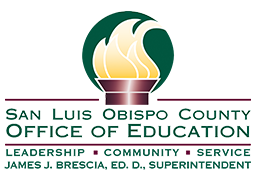Unfinished Learning
This has been rolling around in my brain ever since I heard Phil Daro in Bakersfield, CA at the CMC-Central Symposium in March 2016. I remember sitting there, writing it down, underlining and saying YES! Really loud in my own ears, I was so excited about this phrase! Well, then, as usual, life got busy, work got crazy and math was everywhere.
Since then, a few new ideas have been occupying my thought processes (almost to the point of obsessively, yes I wake up thinking about these things)
- Access and Equity for all students and what that looks like in a Common Core Math Classroom.
- Unfinished Learning as opposed to Gaps in Learning
- Ensuring all students have Grade Level Access to Mathematics.
- Formative Assessment vs. Formative Learning Processes.
Fast forward to the 2017 Impact Through Instructional Advocacy National Core Advocates Convening in Denver, CO. I’m attending a session, “Supporting All Learners in Accessing Grade-Level Math Content”, with Astrid Fossum and Michelle Douglas-Meyer (see a pattern emerging?) and again, I’m writing, scribbling, the wheels are turning, this time I’m tweeting as fast as my fingers will let me.
Why you wonder; Because it all came together for me!
We can ensure access to grade level mathematics even if a student has unfinished learning by intentionally planning just in time formative learning process.
This my friends is equity!
Let’s start with Unfinished Learning, what is it? To me, unfinished learning means that students come to us with oppor tunities to complete mastery of a skill, topic, or idea. Many times, these are the students that are doomed to pullouts, below grade level work, or multiple attempts at differentiation. The opportunity is ours to help that student complete that “just not yet” strand of understanding, when developmentally appropriate.
tunities to complete mastery of a skill, topic, or idea. Many times, these are the students that are doomed to pullouts, below grade level work, or multiple attempts at differentiation. The opportunity is ours to help that student complete that “just not yet” strand of understanding, when developmentally appropriate.
I’ve never believed a student comes to us with holes or gaps in understanding, as in my own mind that is deficit thinking. It assumes that students can’t or aren’t able to attain grade level or mastery. How many of us have had students that just weren’t quite there yet, and given a bit more time or a different approach got it!
How can we support students in their unfinished learning? Anticipate areas of unfinished learning. If we are able to anticipate conceptual misconceptions, procedural disconnects or skill-based errors, we can prepare an activity or a few questions, for a just in time intervention, that will support learners in completing their learning.
Just in time planning alleviates the pre-teaching, re-teaching or continuous teaching of what we think students don’t know based on past experiences or, to be honest, that “it’s always how we’ve done it” scenario. Just in case planning is boring for students as well as for us. Just in case planning is assuming students haven’t been exposed to, mastered or learned the way we want them to know it.
How do we begin just in time planning? Understand The Shifts : Focus, Coherence, and Rigor. Use the Coherence Map at Achieve the Core to hone in on the standards that came before the current grade level. Just be careful to not go too far back in the just in time planning, typically a grade or two below the current will be enough to access learning and begin to complete some of the unfinished learning that has occurred. Also, read the Progression Documents that describe the progression of topics across grade levels.
Terri Gibbs-Burke
Teacher on Special Assignment ~ Math/Accountability
B.A. Math, M.A. Education, M.A. Ed.Admin.
tgibbsburke@slocoe.org
@tgibbsburke
San Luis Obispo County Office of Education
3350 Education Drive
San Luis Obispo, CA 93405
805.782.7262
Contact
- San Luis Obispo County Office of Education
- Office of James J. Brescia, Ed.D.
- 3350 Education Drive
- San Luis Obispo, CA 93405
- Tel: 805-543-7732
- Contact SLOCOE
- Contact Webmaster

